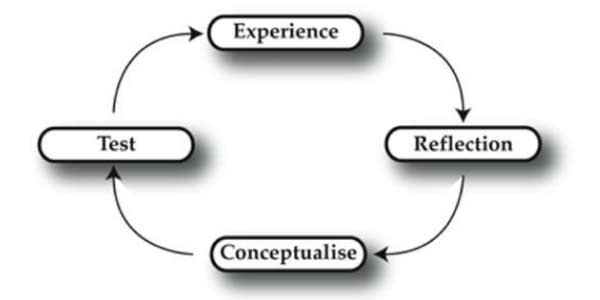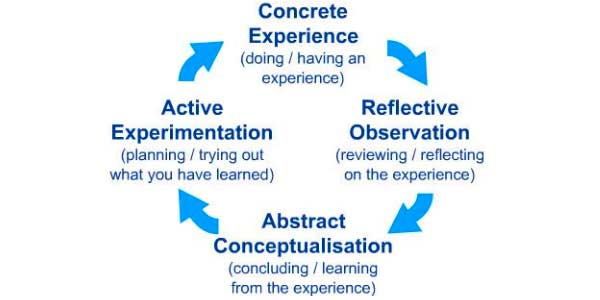Training Standards International, Inc. doesn’t just throw out the manual while helping you build an experiential training program. We do it with a smile.
This is one of the most frequent questions I receive about building an experiential training program: Do you have a class for managers?

As the CEO of Training Standards International Inc., I usually find myself with three choices:
- Give them the company website: www.tsiexperience.com Or
- Give them the ‘easy answer’; “yes”. Or
- Give them the best answer: “We do, but tell me what sort of skill or knowledge you are looking for.”
This third answer is easily my favorite because it allows us to take several necessary steps for building a true experiential training program for a new client. This is an internal, almost involuntary checklist that I always have running in my head when talking about training. It is also simultaneously one of the most difficult definitions to provide as an ‘elevator speech’, and one of the biggest differences between TSIexperience and many other training companies.
Let’s look at these in reverse order.
For most of us, including myself years ago in a previous position, whenever I was looking for specific, usually regulated training, I would search the web, via the training need, e.g. ‘sexual harassment training’, ‘Management Training’, etc.
From these searches, I learned that there are usually two answers:
1. There are lots of companies who have these and many other training classes
2. The training had been written long before I called. Years before. In several instances, actual decades.
The powers that be in those past companies would basically roll the dice and hire a company who’s name was either vaguely familiar, or hire a company because someone in a meeting about it kind of remembered someone going to one of their training once, and it was o.k.
In my current position, I know that this is what many companies are still doing. And for some classes and needs that work just fine. For others…
Which brings us back to those three answers floating in my head.
Give them the best answer: “We do, but tell me what sort of skill or knowledge you are looking for.”
When looking to develop an experiential training program, it is first important to understand how an experiential training class differs from traditional ‘training in a box’. Here are the questions that need to be answered when looking for experiential training. We will actually look at this from both the needs of the client and the needs of the experiential trainer, C, (client)/ET, (Experiential Trainer), once these questions are answered you will be able to better determine your specific organizational needs.
1. What is the need for building an experiential training program?
(C)-I have a high-turnover rate, and I want to hire someone to train my managers.
(ET)-Most trainers understand that adult learners usually require a direct-to-value aspect to their learning, so this need must be incorporated into the training design. When asking an organization about their training gaps, or needs, it is important to begin the DISCOVERY process. More often that many will admit, the most obvious need for training is not the one that will produce the expected, or most efficient results. Some companies will simply accept this initial answer and then have someone come out to your company, go through the materials they already possessed, and then leave. End of story.
In this instance, the need is simply the beginning of the conversation for true direct-to-value.
If there is no Needs Analysis done initially, how do you know what you are trying to affect?
Early in my current position, I was asked to come out to a company to help their employees to learn Project Management. After performing an in-depth needs analysis, I learned that most of the Directors to be trained already had advanced project management certifications. They simply didn’t use the same process, and were hesitant to communicate those processes when asked. (Who want’s to be told they are wrong if it works?)
Upon further conversations with the Sponsor, (the person in the organization who is responsible for the success of the learning event), it was discovered that the issue wasn’t the need to learn project management, it was necessary to do a ‘Communicating outside of Departmental Silo’s’ class, while giving an update on project management.
The update was NOT for the purpose of training the participant’s on something they already knew, but to use their current knowledge-base in order to expand their communication skills, and to get them to agree to perform their shared workflows and procedures utilizing tools approved by the organization itself. All the while building rapport amongst the different ‘silos’, and all within the original one day of training time-frame.
This means that the material must be individualized for the needs of the client. Every time. If there is no Needs Analysis done initially, how do you know what you are trying to affect?
If you have not been asked why you require this training, answer this question yourself in order to facilitate a better ROI.
In the instance I gave above, ‘We need our managers trained in order to reduce our turnover’, the needs analysis began to give us the metrics necessary to show improvement. The original companies turnover was 70%. This was above the already staggeringly low retention rate, (for the retail industry), which is usually around 63%.
During our initial conversations with the sponsor, we learned that most of the turnover numbers came from three specific departments.
Next, we asked more specific questions about those departments and learned that one of the departments in question also had shown a dramatic increase in sales, while another had gone through several managers over the past 8 months. The third department was easily rectified with a small change in procedures, which we suggested before the training class.
The next step in an experiential training program, again using this example, is to discover two things:
To Build an Effective Experiential Training Program You Need to Asses the Organization’s Culture and Policies?
Both written and unwritten. Sometimes the unwritten policies can do much more damage to employee retention due to the fact that they are not always easily communicated or reproduced. While some organizations treat their culture as a given, like most fluid aspects of your organization, they require some degree of standardization amongst your front-line leadership, as well as commitment from your employees. How many of your employees don’t know what your company policies are? How many of the organizational leaders are responding to issues in a way that is not in line with the culture? For many cross-generational employees, this issue begins on the first day of employment and ends…well, with a new position at a different company. The investment of time and training made by the initial company now giving benefit to a competitor. While at a manufacturing company, who had signed up all over that read: “Stop the line if you see a problem. Think about the person next to you first.” One employee stopped the line. He was fired. Needless to say, he wasn’t the last person to leave, but he was the last person to stop the line.
When building an experiential training program, the material is important, but the learning itself, the people must take precedence.
Does the experiential training program provide real-life, relevant examples of how to utilize the organization’s culture and policies while allowing for individuality in its workforce?
Experiential Training must be fluid enough while being developed and on-site to provide a space for the participants to learn how to alter any negative habits they may have learned while giving them updated organizational-savvy options for future encounters. And, while some training-in-a-box companies may boast this option, most simply can’t.
The biggest difference is that the material comes first for them. Not the people. When building an experiential learning class or program, the material is important, but the learning itself, the people must take precedence.
Next comes the creation of the material itself.
Building and experiential class doesn’t mean re-inventing the wheel. Meaning there are excellent resources available. A great place to begin might be Simply Psychology’s great article on Kolb’s Learning Styles (https://www.simplypsychology.org/learning-kolb.html):
This article will give the new experiential trainer or organization a great place to begin.

- Concrete Experience – (a new experience of situation is encountered, or a reinterpretation of existing experience).
- Reflective Observation (of the new experience. Of particular importance are any inconsistencies between experience and understanding).
- Abstract Conceptualization (Reflection gives rise to a new idea, or a modification of an existing abstract concept).
- Active Experimentation (the learner applies them to the world around them to see what results).
During the planning and initial creation, or training materials and documentation phase, look at your own experiences to see if any of them, and the subsequent lessons learned may be transferred to others. Is the lesson learned universal? Are others in the room likely to have similar stories?
This is important in that one of the integral aspects to experiential learning is having someone else relate his or her own experiences, ideologies and emotions so that someone else in the room can learn from the shared experience. This is the reinterpretation of existing experience mentioned in Kolb’s model.
For the sake of time, I will not go through all of four of the integrated learning model here, rather I will move to the last two points in this overview.
The Classroom
While in a training session, there have been several times when some issue has organically risen out of the conversation to reveal a much more serious one. Sometimes one that could easily lead to litigation or increased turnover for the organization. For the experiential trainer, this is a part of the natural flow of the conversations taking place. For most training in a box, this is simply rushed past. If you have a sponsor in the room, it is necessary for them to understand that this may happen, and to know what they would like for you to do should the situation occur. For most organizations, leaving the matter unresolved could prove to be much worse than an actual discussion. Prepare for these discussions as much as possible by having as much information as possible about the organization and knowing the material.
Another great idea is to continue to learn as much as possible. Another large aspect to my success has been learning body language, psychology, patterns, Agile Management, Andragogy and Outside learning theories. I’ve even learned to read lips while speaking so that I could get a better ‘read’ on the participants or to answer the questions of the more reserved participant who will turn and ask his or her neighbor a question. I can then observe the answer to see if the transfer of knowledge has actually happened or change my training style and methods to adjust to the classes needs.
Finally…
Post class follow-up. After each learning session, find out what has changed in the knowledge, skills and/or behavior of your participants. What worked, and what needs to be improved upon? Which exercises and experiments did you use in class that may need to be added to your repertoire, and which one’s need to go away forever?
Remember, experiential learning is a process rooted in rules and concepts, an experiential training program or class requires the same ROI and value-driven metrics as all other aspects of doing business, but it is a process.
Don’t walk into your ELE with 75 items on a minute-by-minute checklist because it doesn’t allow for the discovery process or for the fluidity necessary for adult learning.
Instead, learn about the needs of the company and the people. Match those needs to the policies and culture.
Prepare the material in alignment to those needs and policies, then be prepared enough to be agile enough to change your focus and design while in the room in order to be effective.
Finally learn what was learned.
There are many other steps, but these will get you started. Now, go experiment! Think outside the box!






Leave a Comment